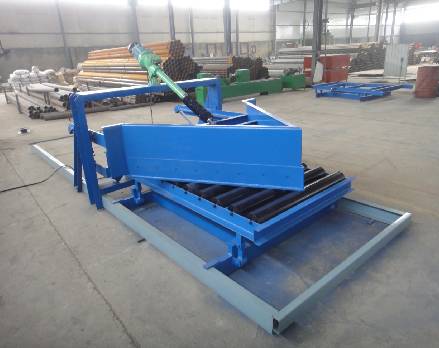 Afrikaans
Afrikaans  Albanian
Albanian  Amharic
Amharic  Arabic
Arabic  Armenian
Armenian  Azerbaijani
Azerbaijani  Basque
Basque  Belarusian
Belarusian  Bengali
Bengali  Bosnian
Bosnian  Bulgarian
Bulgarian  Catalan
Catalan  Cebuano
Cebuano  Corsican
Corsican  Croatian
Croatian  Czech
Czech  Danish
Danish  Dutch
Dutch  English
English  Esperanto
Esperanto  Estonian
Estonian  Finnish
Finnish  French
French  Frisian
Frisian  Galician
Galician  Georgian
Georgian  German
German  Greek
Greek  Gujarati
Gujarati  Haitian Creole
Haitian Creole  hausa
hausa  hawaiian
hawaiian  Hebrew
Hebrew  Hindi
Hindi  Miao
Miao  Hungarian
Hungarian  Icelandic
Icelandic  igbo
igbo  Indonesian
Indonesian  irish
irish  Italian
Italian  Japanese
Japanese  Javanese
Javanese  Kannada
Kannada  kazakh
kazakh  Khmer
Khmer  Rwandese
Rwandese  Korean
Korean  Kurdish
Kurdish  Kyrgyz
Kyrgyz  Lao
Lao  Latin
Latin  Latvian
Latvian  Lithuanian
Lithuanian  Luxembourgish
Luxembourgish  Macedonian
Macedonian  Malgashi
Malgashi  Malay
Malay  Malayalam
Malayalam  Maltese
Maltese  Maori
Maori  Marathi
Marathi  Mongolian
Mongolian  Myanmar
Myanmar  Nepali
Nepali  Norwegian
Norwegian  Norwegian
Norwegian  Occitan
Occitan  Pashto
Pashto  Persian
Persian  Polish
Polish  Portuguese
Portuguese  Punjabi
Punjabi  Romanian
Romanian  Russian
Russian  Samoan
Samoan  Scottish Gaelic
Scottish Gaelic  Serbian
Serbian  Sesotho
Sesotho  Shona
Shona  Sindhi
Sindhi  Sinhala
Sinhala  Slovak
Slovak  Slovenian
Slovenian  Somali
Somali  Spanish
Spanish  Sundanese
Sundanese  Swahili
Swahili  Swedish
Swedish  Tagalog
Tagalog  Tajik
Tajik  Tamil
Tamil  Tatar
Tatar  Telugu
Telugu  Thai
Thai  Turkish
Turkish  Turkmen
Turkmen  Ukrainian
Ukrainian  Urdu
Urdu  Uighur
Uighur  Uzbek
Uzbek  Vietnamese
Vietnamese  Welsh
Welsh  Bantu
Bantu  Yiddish
Yiddish  Yoruba
Yoruba  Zulu
Zulu drum pulley lagging
Understanding Drum Pulley Lagging Importance and Applications
Drum pulley lagging is a critical component in many industries that utilize conveyor systems. The lagging refers to a layer of material applied to the surface of a drive pulley, designed to enhance its performance and prolong its lifespan. The primary functions of lagging include increasing friction, protecting the pulley surface from wear, and providing a better grip on the conveyor belt.
One of the main reasons for implementing drum pulley lagging is to increase the coefficient of friction between the pulley and the belt
. This is crucial as it ensures that the pulley can effectively drive the belt, preventing slippage and allowing for a smooth operation of the conveyor system. Different types of lagging materials, such as rubber, ceramic, and polyurethane, can be chosen based on the specific requirements of the application. For instance, rubber lagging is commonly used for its excellent grip and shock-absorbing properties, making it suitable for heavy-duty applications in mining and heavy materials handling.Another key benefit of drum pulley lagging is the protection it offers to the drum itself. The pulley is subject to constant abrasion and wear caused by the movement of the conveyor belt and the materials being transported. Over time, this wear can lead to costly repairs or replacements. Lagging reduces the impact of this wear by acting as a buffer between the belt and the pulley, thereby extending the life of the pulley and enhancing the overall efficiency of the conveyor system.
drum pulley lagging

Additionally, lagging contributes to improved safety in various industrial applications. By preventing slippage and ensuring a consistent grip, it reduces the risk of unexpected breakdowns or accidents within the conveyor system. This is particularly important in industries such as mining and construction, where heavy loads and hazardous environments are common.
Moreover, the selection of appropriate lagging materials and techniques is essential for optimizing the performance of drum pulleys. Factors such as the weight of the load, the speed of the conveyor, and the environmental conditions must be taken into account. Proper installation and regular maintenance of lagging can further enhance its effectiveness, ensuring continuous and reliable operation.
In summary, drum pulley lagging plays a vital role in the efficiency, safety, and longevity of conveyor systems across various industries. By improving friction, protecting pulleys from wear, and minimizing the risk of slippage, lagging contributes significantly to the operational effectiveness of material handling processes. As technology and materials advance, the future of drum pulley lagging will likely see innovations that further enhance performance and reliability in industrial applications.
-
Trusted Conveyor Solutions from Leading Conveyor Idler Roller ManufacturersNewsJun.27,2025
-
Reliable Return Idler Solutions for Efficient Belt Conveyor SystemsNewsJun.27,2025
-
Precision Conveyor Accessories for Streamlined Material HandlingNewsJun.27,2025
-
High-Quality Belt Conveyor Idler Solutions for Efficient Material HandlingNewsJun.27,2025
-
High-Performance Belt Conveyor Pulleys for Reliable Material HandlingNewsJun.27,2025
-
Enhancing Material Handling EfficiencyNewsJun.27,2025





























